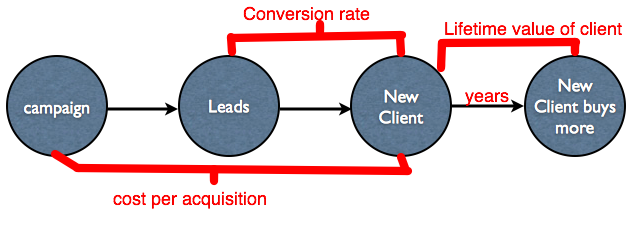Live and Die by These
This may not be the most riveting topic (unless you like numbers); however, keeping track of certain magic numbers, analyzing them and and taking action on them, is one of the most powerful ways to improve your business. There is no better way of predicting your future revenue than stats and statistics from your past!
There are lots of reasons why you should “know your numbers” but here just a few:
Tracking, collecting and analyzing your results let’s you know if the decisions you are making are moving your in a positive or negative direction. Your statistics are a kind of validation for your instinct. Your gut may tell you to do something for yourself or your clients, but unless you know your numbers, you’ll never be able to validate those instincts.
Predictability. Knowing certain key performance indicators will allow you to predict your revenue with a certain degree of accuracy. Knowing how much revenue will be generated is important for many reasons, but one major one is knowing how much you can allocate for different projects each month.
Keeping good statistics will allow you to kill the monster while it’s still small. If you are trying something new and it’s just not working – your numbers will tell you. Your results will keep you from throwing good money after bad money. The best part about accurate statistics is they don’t lie (unless you are a politician).
So what numbers should you be tracking? If you see the value in keeping track of your results, then you’re probably wondering which ones?
Here are a couple of the most important sales numbers:
Lifetime value of client:
This is so important because this number will allow you to know what is an acceptable amount to spend to acquire a new customer. For example if you know, on average that your clients are worth $500/year, would you be willing to spend $300 to acquire them today (Cost per acquisition)? A quick and easy way to estimate this is to take net revenue since the inception of your business and divide it by the number of clients have given you money. (NI/#clients)
Cost Per acquisition:
It doesn’t matter what business you are in – you NEED customers! If you don’t have customers, then you don’t have sales! Hopefully you aren’t one of the many entrepreneurs that are hooked on the most addictive drug in America called “hopium”.
They go into business and they hope it’s going to all work out and they hope they are going to get clients. If you want to truly scale your company, you are going to have to spend money on marketing, advertising, production ect. This number (CPA) let’s you know if your chosen marketing medium is working and whether or not it’s working efficiently. I prefer to track this by campaign. So if you ran a radio ad that cost you $500 and it resulted in 2 clients, your CPA would be approximately $250.
Is this number good or bad?
VERY IMPORTANT:
I think most people would say it depends on what they purchased. Let’s say the item they bought was a $250 item then we would break even ($250×2) and it would be a wash and most people would think it’s not worth their time.
But a wise marketer would consider the lifetime value of the client. If the life time value of the client is somewhere around $500 then there is a very good chance that a 50% ROI is possible in the future. For every $250 you spent to acquire a client today in the future you will make approximately $500, even if it took a few years, you would still have a higher return than the stock market!!
Lead to Sales (conversion rate): This is the percentage of leads that become clients/customers sometimes simply referred to as your conversion rate. In our example above where we ran a radio ad that resulted in 2 new clients more than likely it generated leads first. Either they called for more information and then were converted to a sale or they went to website to fill out a form. Tracking the number of these people that become new customers will give you a good indication of how well your sales process is working.
If you know these numbers you can make better business decisions and you can continue to tweak them to try an improve them.
For example in our radio ad scenario, what if there had been 100 leads generated? If you we are tracking our numbers this would tell us that our lead to sales conversion rate was a measly 2%. A lot of entrepreneurs would say that this radio ad was failure and would move on. But since we know that our cost to aquire these customers was $250 and our lifetime value of a client is $500, we know we are winning in the long run.

My late mentor Chet Holmes would always hammer home, “you can’t improve what you can’t measure”, and since we know that our conversion to sales is only 2% – we can begin to really fine tune the conversion part of the sale.
I’ve had long conversations with several multi-millionaires, that run several business ventures, that say they do it almost exclusively by the numbers. Tony Robbins coaches a client that pays him one million dollars a year almost purely by the numbers.
So I encourage you to start tracking the numbers that will give you a pulse on how your business is performing, how your marketing is performing so that you can measure and improve your results.
Live and die by these numbers!
Let’s do this!!
Loving, Living, Giving Large
Jeff

